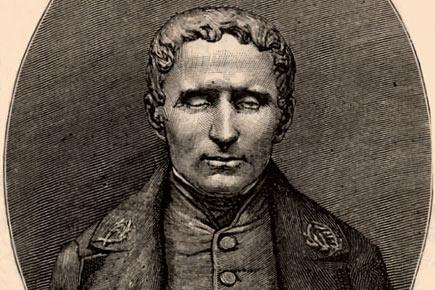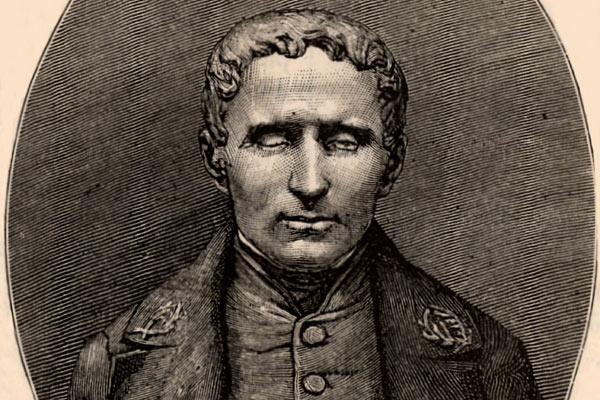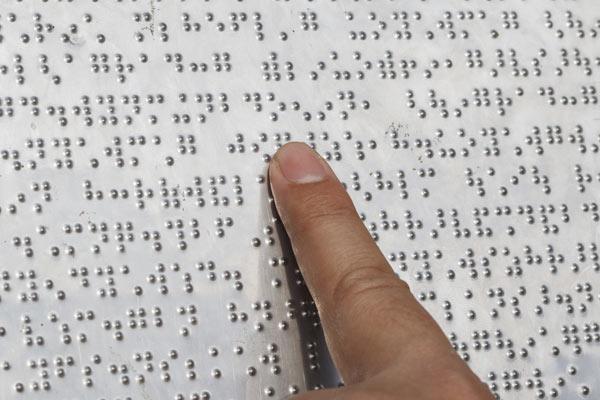Today marks the 207th birth anniversary of Lous Braille, the French educator who invented Braille, a system of reading and writing for use by the blind or visually impaired...

Louis Braille
Today marks the 207th birth anniversary of Lous Braille, the French educator who invented Braille, a system of reading and writing for use by the blind or visually impaired.
ADVERTISEMENT
Braille, which is used today on a worldwide scale has enabled visually impaired people to read and write and even use computer screens, thanks to the latest refreshable braille display technology. On this occasion, we look back at how the man chanced upon this amazing invention...

Louis Braille
At the tender age of 3, Louis Braille was accidentally blinded in an accident at his father's workshop. While trying to make holes in a piece of leather with an awl, he pressed down hard to drive the point in, while squinting closely at the surface, only for the awl to glance across the tough leather and strike him in one of his eyes.
After the damaged eye was patched up by a local physician, Braille was sent to a highly respected surgeon in Paris but no treatment could save the damaged organ. The young Louis Braille, suffered in agony for weeks as the wound became severely infected and eventually lost sight in his other eye after the infection spread due to sympathetic opthalmia.
Despite this harrowing experience, Louis Braille learnt to master his disability while growing up thanks in part to his parents, who decided to raise him as a normal child. His father hewed special canes for him to navigate the village and Braille's creative mind impressed the local teachers and priests, and he was accommodated with higher education.
As a young school boy in 1819, Louis Braille came across the Haüy system, devised by Valentin Haüy, the founder of the Royal Institution for the Young Blind in Paris, which is now the National Institute for the Young Blind, INJA. Haüy was a committed philanthropist who devoted his life to helping the blind.
His system incorporated a technique of embossing heavy paper with the raised imprints of Latin letters. Readers would trace their fingers over the text, comprehending slowly but in a traditional fashion which Haüy could appreciate.
Although helpful in making the blind read, Lous Braille despaired over their lack of depth: the amount of information kept in such books was necessarily small. This was due to the letters being made in a complex artisanal process using wet paper pressed against copper wire, the children could not hope to "write" by themselves. Louis Braille was able to write his first sentences after Simon-René provided him with an alphabet fashioned from bits of thick leather, a slow and cumbersome process but effective nonetheless.

Picture for representational purposes
In 1821, Louis Braille discovered a new system of communication devised by Captain Charles Barbier of the French Army, possibly from a newspaper account read to him by a friend according to some sources. The system, which Barbier referred to as "night writing", was a code of code of dots and dashes impressed into thick paper. These impressions could be interpreted entirely by the fingers, letting soldiers share information on the battlefield without having light or needing to speak. Although this turned out to be extremely complicated to use in it's original military form, Louis Braille was inspired to develop a system of his own from it.
After working tirelessly on his ideas, Louis Braille finally completed his system in 1824 at only 15 years of age. He simplified Charles Barbier's night writing system into uniformed columns for each letter and reduced the twelve raised dots to six. Braille published his system in 1829, and by the second edition in 1837 had discarded the dashes because they were too difficult to read. Crucially, Braille's smaller cells were capable of being recognized as letters with a single touch of a finger.
Ironically, Louis Braille used an awl to create his own raised-dot system of the Braille, the same tool which had blinded him. He further worked on an ergonomic interface for using it, based on Barbier's own slate and stylus tools. By soldering two metal strips across the slate, he created a secure area for the stylus which would keep the lines straight and readable.
 Subscribe today by clicking the link and stay updated with the latest news!" Click here!
Subscribe today by clicking the link and stay updated with the latest news!" Click here!






